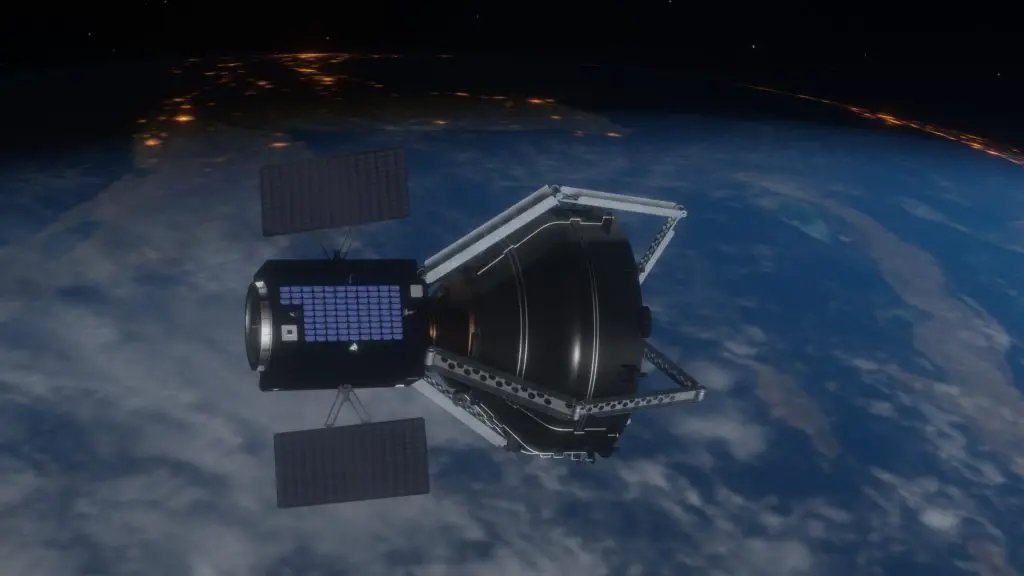In a remarkable event that seems straight out of a Star Wars movie, a Chinese space cleaner was spotted in late January grabbing another long-dead satellite and days later throwing it into a “graveyard” orbit 300 km away, where objects are less likely to hit spacecraft.

This rare event was presented by Dr. Brien Flewelling in a webinar hosted by the Center of Strategic and International Studies and Secure World Foundation last month.
Table of Contents
The Chinese Space Cleaner in Action
The Chinese space cleaner, known as the SJ-21 satellite, was seen on January 22 changing its usual place in the sky to approach the decommissioned satellite Compass-G2. A few days later, SJ-21 attached to G2, altering its orbit. Over the course of the next few days, the spacecraft couple started dancing westward, and by January 26, the two satellites separated, and G2 was kicked into oblivion.
NASA’s $1 Billion Spacecraft Beams Back the Sharpest Images of Jupiter—Ever
The Target: Compass-G2
The Compass-G2, or BeiDou-2 G2, is a spacecraft from China’s BeiDou-2 Navigation Satellite System that failed shortly after launching in 2009. For more than 10 years, the metal carcass has been wandering around Earth alongside millions of other pieces of space trash. The Chinese space cleaner, SJ-21, which launched in October 2021, has now returned to a geostationary orbit (GEO) just above the Congo Basin.

The Chinese Space Cleaner: A Service or a Threat?
While there’s nothing wrong with throwing out the trash, and many other countries have launched or are currently developing technologies to clear space junk, some U.S. officials have expressed worry over Chinese trash disposal satellites like the SJ-21. James Dickinson, commander of the US Space Command, said in April 2021 that technology like China’s SJ-21 “could be used in a future system for grappling other satellites.”
The Future of Space Maintenance
The Chinese space cleaner is most likely one of China’s On-Orbit Servicing, Assembly, and Manufacturing (OSAM) satellites. Many space agencies have been developing OSAM missions for decades. These could be, for example, spacecraft designed for refueling or repairing existing satellites, or disposing of space waste. Since the beginning of space activities in the ’60s, more than 6,000 launches have delivered over 50,000 objects in orbit, according to the US Space Surveillance Network. More than 30,000 artificial objects are orbiting our planet, of which only about 5,000 are functioning, according to the ESA’s Space Debris Office.
Conclusion: The Role of the Chinese Space Cleaner
The Chinese space cleaner, SJ-21, has demonstrated a significant capability in space debris management. As space becomes increasingly congested, the need for effective space debris removal strategies becomes more critical. The SJ-21 mission represents a significant step forward in this regard. However, the potential dual-use nature of such technology also raises important security concerns that need to be addressed as we continue to expand our activities in space.
Reference(s):

